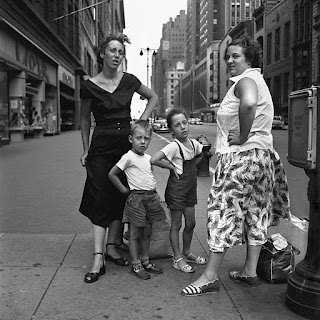
Sid Grossman, Coney Island, c. 1947
The exhibition at The Jewish Museum gives a terrific overview of the history and work of the The Photo League during its existence from 1936-1951.
Formed in 1936 in Depression-era New York, the work of The Photo League began as providing a social and class conscious visual document of the city. The photographs offer a look at 1930s and '40s urban life until the group was blacklisted and disbanded in 1951, in the climate of Cold War paranoia.
Working at the same time as the Farm Security Administration photographers were working to document farm conditions and rural places of the American landscape, The Photo League set their sights on the urban environment. Precursors in social documentary photography, such as Jacob Riis or Lewis Wickes Hine, seem to have influenced the vision of both FSA and early Photo League photographers. The 1930s photographic lens was focused on social inequalities, poverty, and discrimination. The idealistic and socially progressive photography of the 1930s gave way after the beginning of World War II. The FSA ended in 1944, but The Photo League persisted a bit longer, until 1951. As the political and social environment of the country had altered after the war, so too did the vision of The Photo League, but there continued to be a tender and piquant focus on the human experience of everyday life in the city.
Walter Rosenblum, Disturbed Woman, Pitt Street, 1938
Bill Witt, The Eye, 1948
Bernard Cole, Shoemaker's Lunch, 1944
Leon Levinstein, Untitled, n.d.
Morris Engel, Harlem Merchant, 1937
Rebecca Lepkoff, Broken Window on South Street, 1948
Jerome Liebling, Butterfly Boy, 1949
Lucy Ashjian, Untitled (Relief Tickets Accepted), c. 1939

















